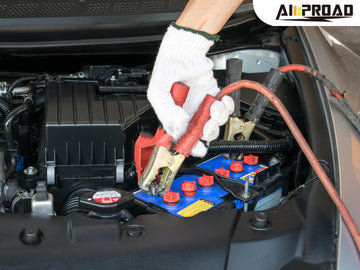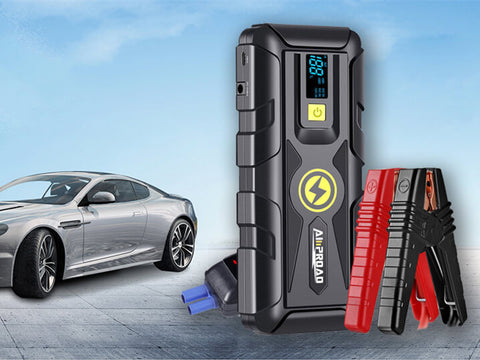
After jump-starting a car, keeping the engine running for at least 15 to 30 minutes helps the alternator recharge the battery and restore sufficient power for the next start. Driving the vehicle during this time is even more effective, as higher RPMs allow the alternator to work more efficiently. If the battery struggles to hold a charge, it may need further testing or replacement to avoid future starting issues.
How Long Should You Let the Car Run After a Jump Start?
The duration for which you should let your car run after a jump start can vary based on several factors. One critical factor is the condition of the battery before the jump start. If the battery was severely depleted, it may take longer for the alternator to replenish its charge fully. Additionally, the capacity of the alternator and the electrical load of the vehicle play significant roles. Vehicles with larger electrical demands, such as those with numerous accessories or aftermarket modifications, may require more time to recharge the battery adequately.
Another consideration is the driving conditions after the jump start. If you're driving at highway speeds, the alternator typically generates more electricity, allowing for faster battery replenishment. Conversely, if you're driving in stop-and-go traffic or idling for an extended period, the charging process may take longer. Additionally, colder temperatures can affect battery performance, so allowing the car to run for a bit longer in cold weather may be beneficial.
In determining the appropriate length of time to let your car run after a jump start, it's essential to consider these factors collectively. While there's no set rule for how long to let the engine run, a general guideline is to drive the vehicle for at least 30 minutes to an hour. This duration allows the alternator sufficient time to recharge the battery adequately. However, it's crucial to monitor the vehicle's battery gauge during this time. Once the gauge shows that the battery is charging normally, and the vehicle's electrical systems are functioning correctly, it's safe to conclude that the battery has been sufficiently replenished, and you can proceed with your journey confidently.
Why is it Necessary to Let the Car Run After a Jump Start?

After jump-starting a vehicle, letting the engine run serves a crucial purpose. The primary goal is to replenish the charge in the battery, which has likely been depleted due to the jump start. When the vehicle's engine runs, the alternator generates electricity, which not only powers the vehicle's electrical systems but also charges the battery. This process helps ensure that the battery has sufficient power to start the engine on its own in subsequent attempts.
Additionally, allowing the engine to run for a while after a jump start also aids in stabilizing the vehicle's electrical system. Jump-starting a car can put stress on various electrical components, and letting the engine run allows these systems to normalize gradually. It also gives the alternator time to distribute power evenly throughout the vehicle, ensuring that all electrical systems function correctly.
To summarize, letting the car run after a jump start is essential for recharging the battery and stabilizing the vehicle's electrical system. This practice ensures that the battery has enough power for future starts and helps prevent further issues related to the electrical system. So, if you've used a jump starter to get your vehicle going, knowing how to boost a car properly is important, and it's a good idea to let it run for a while to ensure everything is in proper working order.
What Happens if You Don't Let the Car Run Long Enough After a Jump Start?
If you don't let your car run for a sufficient amount of time after a jump start, several potential consequences may arise. One primary concern is that the battery may not have had enough time to recharge fully. As a result, the battery's charge may remain low, increasing the likelihood of future starting difficulties. Insufficient running time also means that the alternator may not have had the opportunity to generate enough electricity to power the vehicle's electrical systems adequately. This can lead to issues such as dimming headlights, erratic dashboard warning lights, or even stalling while driving.
Prematurely shutting off the engine after a jump start can pose various risks to both the battery and the vehicle's electrical system. Without adequate time to recharge, the battery may continue to operate at a reduced capacity, diminishing its overall lifespan. Additionally, repeatedly starting the engine without allowing sufficient running time can place excessive strain on the starter motor and other components involved in the starting process. Over time, this can lead to premature wear and potential failure, necessitating costly repairs or replacements.
To avoid these potential consequences, it's essential to ensure that you let your car run for a suitable duration after a jump start. By allowing the engine to run for at least 30 minutes to an hour, you give the alternator ample time to recharge the battery fully. This helps prevent future starting problems and ensures that the vehicle's electrical system operates smoothly. Remember to monitor the battery gauge and other indicators during this time to ensure that the charging process is progressing as expected. Following these steps helps maintain the health and longevity of your vehicle's battery and electrical components, keeping you safe on the road.
Are There Any Precautions to Take During the Running Period?
During the running period following a jump start, it's crucial to take certain precautions to ensure safety and effective battery recharging. Firstly, monitor the vehicle's dashboard gauges and warning lights closely. Pay attention to the battery gauge to ensure it's showing signs of charging, such as a gradual increase in voltage. Additionally, keep an eye on other vital indicators like engine temperature and oil pressure to detect any anomalies that may require immediate attention.
While the engine is running, avoid placing excessive strain on the electrical system by minimizing the use of accessories like headlights, air conditioning, and stereo systems. This allows the alternator to focus on recharging the battery without being overloaded by additional electrical demands. If possible, refrain from driving the vehicle during the running period to prevent unnecessary wear on the engine and other components. Instead, allow the engine to idle in a safe, well-ventilated area until the recommended running time has elapsed.
It's also wise to keep a set of jumper cables and a portable jump starter handy during the running period as a precautionary measure. In the event that the battery fails to hold a charge or the engine stalls, having these tools readily available can help you quickly address any unexpected issues. By taking these precautions and closely monitoring the vehicle during the running period, you can ensure a safe and successful jump start experience while safeguarding the health of your car's battery and electrical system.

How Does Weather Conditions Affect the Running Time After a Jump Start?
Weather conditions play a significant role in determining the running time required after a jump start. In extremely cold temperatures, batteries experience reduced efficiency and capacity, which can prolong the time needed to recharge them fully. In such conditions, it's essential to allow the engine to run for an extended period to ensure adequate recharging of the battery. This extra time allows the alternator to generate sufficient power to replenish the battery's charge, compensating for the increased demand caused by the cold weather.
Conversely, in hot weather, batteries may experience higher rates of self-discharge, particularly if they are older or worn. While warmer temperatures generally enhance battery performance, they also increase the risk of overcharging if the engine is left running for too long after a jump start. In such cases, it's crucial to strike a balance between allowing the engine to run for sufficient time to recharge the battery without risking damage from overcharging. Monitoring the battery voltage and temperature during the running period can help determine when it's safe to shut off the engine.
When jump-starting a car in extreme weather conditions, it's advisable to take additional precautions to ensure a successful outcome. For example, in cold weather, keeping the vehicle's hood closed while the engine is running can help retain heat and improve the effectiveness of the charging process. In hot weather, providing adequate ventilation around the vehicle can prevent overheating and minimize the risk of thermal damage to the battery and electrical components. Additionally, using a portable jump starter with built-in safety features, such as temperature monitoring and automatic shut-off, can help mitigate risks associated with extreme weather conditions, ensuring a safe and effective jump start.
Can You Drive Immediately After a Jump Start or Should You Wait?
After a jump start, whether you can drive immediately or should wait depends on various factors. While idling allows the alternator to recharge the battery, driving the vehicle puts additional strain on the battery and charging system. In general, it's advisable to let the engine run for a few minutes after a jump start to ensure the battery receives adequate charge. During this time, the alternator replenishes the battery's charge, helping it regain its normal functionality.
However, if the battery was severely depleted or if the jump start was performed in cold weather conditions, it may be prudent to wait a bit longer before driving. Cold temperatures can affect battery performance, requiring more time for it to reach optimal operating conditions. Additionally, if the jump start was needed due to a drained battery caused by leaving lights or accessories on, allowing the engine to run for a few extra minutes can help ensure the battery has enough charge to support the vehicle's electrical systems during driving.
Ultimately, the decision to drive immediately after a jump start or to wait depends on the specific circumstances and the condition of the battery. It's essential to exercise caution and use good judgment to avoid potential complications. If uncertain, erring on the side of caution by waiting a bit longer before driving can help prevent the risk of stalling or experiencing electrical issues while on the road.


